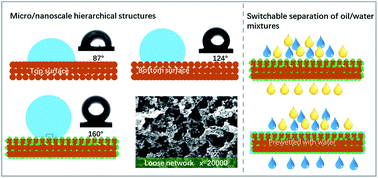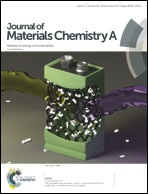Super-hydrophobic 3D printed polysulfone membranes with a switchable wettability by self-assembled candle soot for efficient gravity-driven oil/water separation†
Abstract
The development of super-hydrophobic surfaces for water/oil separation has attracted much interest in fundamental research and industrial applications in recent years. This article proposes a facile method to fabricate super-hydrophobic surfaces on 3D printed polysulfone (PSU) membranes via the coating of candle soot. A 3D printed PSU membrane fabricated by selective laser sintering was applied for the oil/water separation and showed a different wettability on its top surface and bottom surface. The self-assembled candle soot loose network endowed the 3D printed PSU membrane with super-hydrophobicity with a water contact angle of 161° and a sliding angle of 5°, preserving an outstanding mechanical stability under sonication and chemical stability in 1 M HCl, 1 M NaOH, 1 M NaCl and hot water. Interestingly, this super-hydrophobic surface could dramatically switch to a super-oleophobic state after being prewetted by water. Ten cycles of switchable oil/water separation were performed, demonstrating a high oil/water separation stability of the dry candle soot coated PSU membrane and the water prewetted candle soot coated PSU membrane. Additionally, the effect of selective laser sintering processing parameters on the structure and performance and the influence of the immersion time on the deposition of candle soot were investigated. Overall, this study provides an efficient, simple and reliable fabrication method for super-hydrophobic surfaces with switchable wettability.



 Please wait while we load your content...
Please wait while we load your content...